The Chichibu Kawase Festival is a captivating summer event that showcases the centuries-old tradition of Mikoshi, a portable shrine ceremoniously immersed in the Arakawa River. Organized by the Chichibu Shrine, this annual celebration culminates in a profound ablution ritual, symbolizing the renewal and purification of the shrine’s revered deities. As participants engage in prayers and chants, the atmosphere evokes a profound sense of cultural heritage and community unity. There’s much more to discover about this unique festival that celebrates the deep-rooted connection between people, nature, and the divine.
Key Points
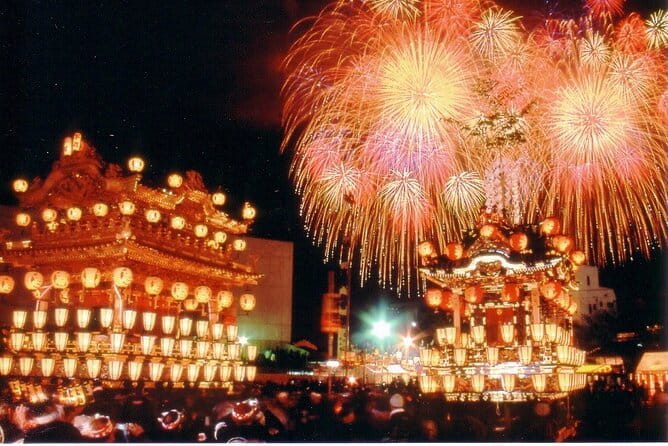
- The Chichibu Kawase Festival features the Mikoshi, a portable shrine, which is carried in a procession and then immersed in the Arakawa River for a purification ritual.
- The festival is organized annually by the Chichibu Shrine during the summer and is a major counterpart to the December night festival.
- The tour itinerary includes visiting the Chichibu Festival Museum, the Chichibu Shrine, and following the Mikoshi procession to the Arakawa River for the ablution ceremony.
- The Myoken-sama, the goddess of the polar star, is a central figure in the festival, symbolizing steadfastness and spiritual direction.
- The ablution ceremony at the Arakawa River is a solemn yet celebratory ritual that symbolizes the renewal and purification of the shrine deities.
Event Overview
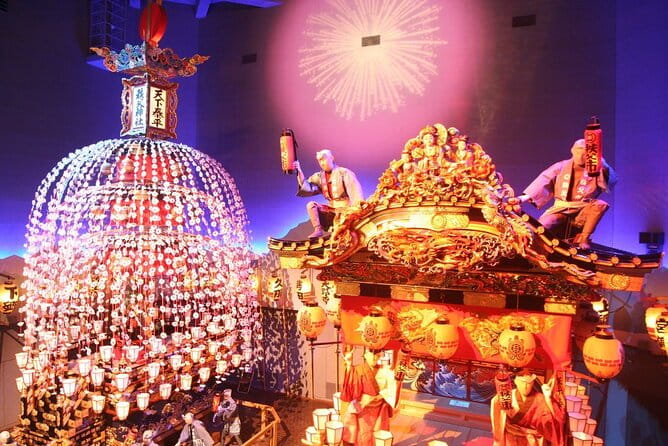
The Chichibu Kawase Festival features the prominent display of Mikoshi, a portable shrine, organized annually by Chichibu Shrine.
This significant summer event serves as a major counterpart to the night festival held in early December. The Mikoshi, a symbol of the festival, is carried through the streets by community members, culminating in an ablution ceremony where the sacred object is immersed in the Arakawa River.
The festival’s vibrant atmosphere and deep cultural significance draw visitors from near and far to witness this unique Japanese tradition.
You can also read our reviews of more tours and experiences in Saitama Prefecture.
Tour Itinerary
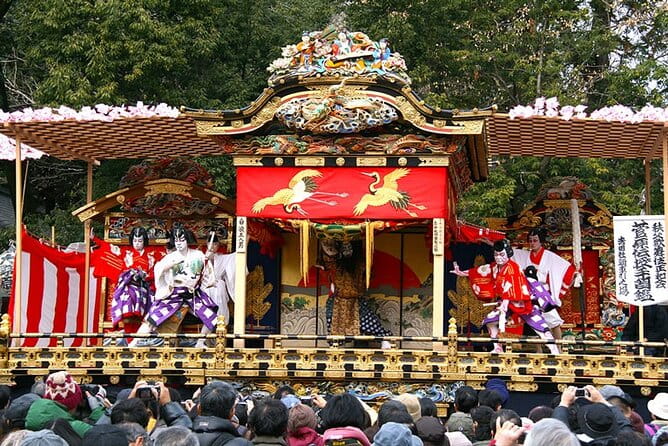
A typical tour begins at the Chichibu Festival Museum, where participants explore the annual festivals celebrated throughout the Chichibu region.
The group then visits Chichibu Shrine, learning about its history, deities, and the significance of Myoken-sama, a goddess associated with the polar star.
As the tour follows the Mikoshi procession to the Arakawa River, the highlight is the ablution ceremony, where the Mikoshi is immersed in water, a spiritual cleansing ritual.
Throughout the experience, the guide Sachiko provides insightful commentary, enriching the participants’ understanding of the festival’s cultural and religious importance.
Exploring Chichibu Shrine
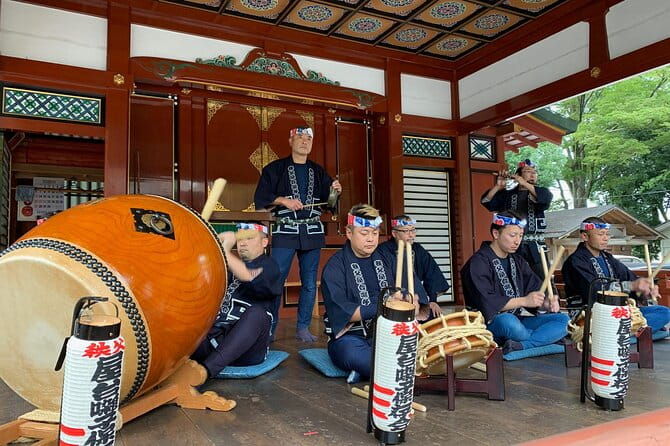
As the tour procession heads towards Chichibu Shrine, participants gain a deeper understanding of its historical significance and the deities it venerates.
The guide, Sachiko, provides an engaging overview of the shrine’s origins, dating back centuries. Visitors learn about Myoken-sama, the goddess associated with the polar star, and her importance in the shrine’s rituals and festivals.
Sachiko’s insights go beyond surface-level knowledge, immersing the group in the spiritual traditions that underpin the Chichibu Kawase Festival.
With each step towards the shrine, the group’s appreciation for the festival’s cultural depth grows.
The Significance of Myoken-sama
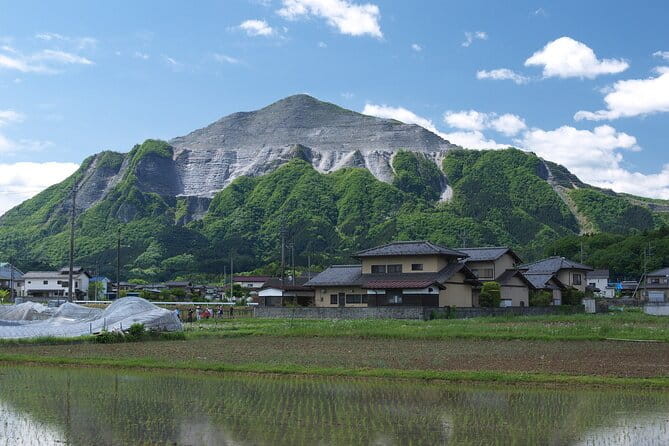
Myoken-sama, the goddess associated with the polar star, holds a profound significance within the cultural fabric of Chichibu Shrine. The deity is revered for its ability to guide and protect travelers, making it a central figure in the Chichibu Kawase Festival.
Here are 4 key reasons why Myoken-sama is so important:
- Celestial Connection: As the polar star, Myoken-sama symbolizes steadfastness and orientation, providing spiritual direction for the festival participants.
- Purification Ritual: The immersion of the Mikoshi in the Arakawa River is believed to cleanse and renew the shrine, with Myoken-sama overseeing this sacred process.
- Community Unity: The festival brings together locals, fostering a shared sense of identity and reverence for Myoken-sama.
- Tradition Preservation: The veneration of Myoken-sama preserves the rich cultural heritage of Chichibu, passed down through generations.
Witnessing the Mikoshi Procession
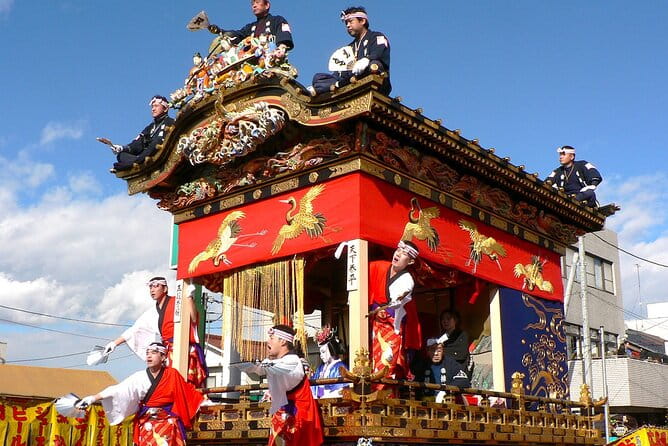
The festival’s centerpiece comes to life as the Mikoshi, a magnificent portable shrine, embarks on its procession through the streets of Chichibu. Adorned with intricate carvings and vibrant colors, the Mikoshi is hoisted onto the shoulders of a dedicated team of men, who guide it with synchronized movements. As the Mikoshi moves forward, the air fills with the rhythmic chants and the pounding of traditional drums, captivating the crowd. The procession weaves through the narrow streets, showcasing the community’s unwavering spirit and the deep-rooted traditions of the Chichibu Kawase Festival.
| Time | Location |
|---|---|
| 12:30 PM | Starts at Chichibu Station |
| – | Follows Mikoshi procession |
| – | Culminates at Arakawa River |
| – | Ends at meeting point |
The Ablution Ceremony at Arakawa River
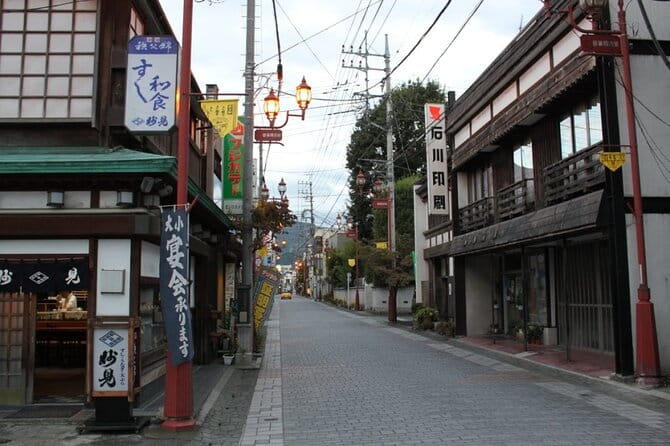
Following the Mikoshi procession, the tour reaches the Arakawa River, where the culminating ablution ceremony takes place.
The Mikoshi is slowly immersed in the river, cleansing the sacred object and reaffirming its connection to the water.
The community members watch attentively, some offering prayers and chants.
This ritual holds deep spiritual significance, symbolizing the renewal and purification of the shrine’s deities.
The experience is both solemn and celebratory, with the crowd erupting in cheers as the Mikoshi emerges from the river.
The tour participants are awestruck, having witnessed a profound cultural tradition.
- Mikoshi is immersed in the Arakawa River
- Ritual of renewal and purification
- Community members offer prayers and chants
- Celebratory cheers as Mikoshi emerges
Participant Experiences and Insights
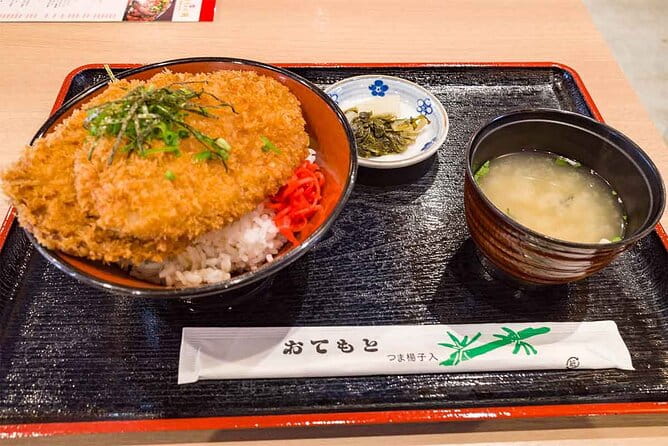
How do participants describe their experience on the Chichibu Kawase Festival tour?
Reviewers praise the engaging insights offered by the guide, Sachiko, who reveals deeper meanings beyond surface-level knowledge.
They highlight the vibrant atmosphere, seeing local customs and the spiritual significance of the festival.
Participants express enthusiasm for the community’s involvement, from young to old, noting the tour provides an authentic cultural experience in Japan.
The ablution ceremony at the Arakawa River, where the Mikoshi shrine is immersed, seems to be a highlight, captivating visitors with its age-old traditions.
Practical Considerations
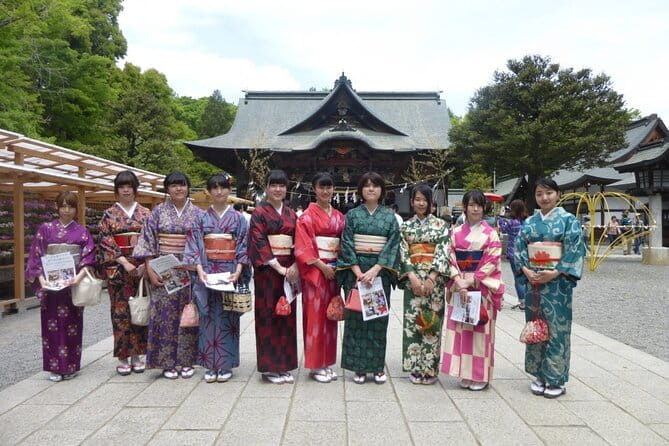
While the Chichibu Kawase Festival tour is an immersive cultural experience, certain practical considerations may be helpful for prospective participants.
The tour involves walking and standing for extended periods, so comfortable shoes are a must. Staying hydrated and bringing snacks is advisable, as the itinerary has limited scheduled breaks.
Modest clothing that covers shoulders and knees is recommended to be respectful of the shrine’s cultural norms. Plus, participants should be prepared for potential crowds and be mindful of their surroundings during the lively procession and river ceremony.
Frequently Asked Questions
Can We Take Photos During the Festival Activities?
Participants are generally allowed to take photos during the festival activities, but they’re encouraged to be respectful and avoid disrupting the ceremonies. The guide can provide guidance on appropriate photo-taking etiquette.
Are There Any Dress Code Requirements for Participants?
There are no specific dress code requirements for participants. Visitors are advised to wear comfortable, weather-appropriate clothing that allows for easy movement, as the tour involves walking and standing during the festival activities.
What Is the Nearest Airport to the Festival Location?
The nearest airport to the Chichibu Kawase Festival location is Narita International Airport, located about 80 miles away. Travelers can take a train or shuttle from the airport to reach Chichibu Station, the starting point of the festival tour.
Is There an English-Speaking Guide Available for the Tour?
Yes, the tour is led by an English-speaking guide named Sachiko, who provides engaging insights and deep knowledge about the festival’s history, customs, and spiritual significance, as highlighted by previous participants’ positive reviews.
Can We Purchase Souvenirs or Local Products at the Festival?
Yes, visitors can purchase souvenirs and local products at the Chichibu Kawase Festival. The festival features various vendor stalls selling traditional crafts, snacks, and other memorabilia for attendees to bring home as mementos of their cultural experience.
The Sum Up
The Chichibu Kawase Festival is a profound celebration of cultural heritage and spiritual renewal. Witnessing the immersion of the sacred Mikoshi shrine in the Arakawa River is a deeply moving experience, as participants engage in prayers and chants that symbolize the purification of the deities. This annual event fosters a strong sense of community unity and shared identity among attendees, making it a must-see for those seeking to enjoy Japan’s vibrant festival culture.
More Tour Reviews in Saitama Prefecture
- Kadokawa Culture Museum Standard Ticket
- Chichibus Weaving Story: A Journey of Tradition and Festival
- Cultural Sake Brewery Private Tour & Unlimited Tasting Near Tokyo
- Lets Experience the Traditional Japanese Culture of “Kendo”!!
- Sumo Stable Intimate Morning Practice
- Wellness in Saitama: Takedera Blowing Zen Meditation & Hot Spring
Not for you? Here's more things to do in Saitama Prefecture we have recnetly reviewed
- Experience Seasonal Green Tea Picking in Sayama and Nostalgic Walk in Kawagoe!
- Private Ninja Costumer Photo Shooting in Gyoda Oshi Castle
- Private Beginner Japanese Cooking Class Near Tokyo
- Mt. Fuji and Hakone Private Tour With English Speaking Driver
- The Best Of Yono Walking Tour
- Easy for Everyone! Now You Can Play Handmade Mini Shamisen and Show off to Everyone! Musical Instruments, Sweets and Live Music
- Custom Made Jade Carvings
- Private Nikko Tour With English Speaking Driver
- Local 9 Oclock Set-Up Rafting Half-Day (3 Hours)
- Katana Samurai Sword Making Experience – Tokyo
- 10:30 Local Gathering and Rafting Tour Half Day (3 Hours)
- Kadokawa Culture Museum Standard Ticket
